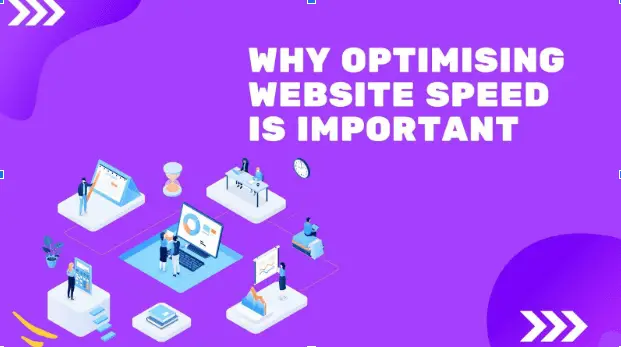Why website speed is critical: Tips from top Web development Agency
In the world of web development, speed is everything. A slow website can lead to a poor user experience, decreased engagement, and lost revenue. With the abundance of options available to consumers, a slow website can decide whether they stay on your site or move on to a competitor’s. In this blog, we’ll explore why speed matters in web development and provide tips from an agency that prioritizes performance.
Why does website Speed Matters?
A website’s speed can significantly impact user experience and engagement. According to a study by Google, when a website takes longer than three seconds to load, 53% of mobile users will abandon the site. Furthermore, 47% of consumers expect a website to load in two seconds or less. Speed affects not only user engagement but also search engine rankings. Google’s algorithm considers website speed, meaning that faster websites will rank higher in search engine results pages (SERPs).
In addition to user experience and search engine rankings, website speed can impact revenue. Amazon reported that they saw a 1% decrease in sales for every second of added load time. Furthermore, Walmart saw a 2% increase in conversions for every second of their website’s load time improvement.
Tips for Improving Website Speed
Now that we understand why speed matters, let’s explore some tips for improving website speed.
- Optimize Images
As mentioned earlier, large images can significantly slow down website speed. To optimize images, you can use tools such as Adobe Photoshop or ImageOptim to compress images without sacrificing quality. Additionally, you can use lazy loading to defer loading images that are not visible on the screen. This can reduce the initial load time and improve user experience.
- Minimize HTTP Requests
To minimize HTTP requests, you should combine files where possible. For example, combine all CSS files into one file and all JavaScript files into one file. Additionally, you should use CSS sprites for images. CSS sprites group images, reducing the HTTP requests required to load the website.
- Leverage Browser Caching
To leverage browser caching, you should set an expiration date on static resources such as images, CSS files, and JavaScript files. This tells the user’s browser when to check for updated resources. Additionally, you can use server-side caching to store frequently accessed data in memory, minimizing database calls required to generate a page.
- Use a Content Delivery Network (CDN)
A CDN can significantly improve website speed by reducing the distance data travels. When a user visits a website, the CDN identifies their location and serves content from the server that is geographically closest to them. This can reduce the load time and improve user experience.
When selecting a CDN provider, you should consider network size, server locations, and pricing factors. Some popular CDN providers include Cloudflare, Akamai, and Amazon CloudFront.
- Minimize JavaScript and CSS
JavaScript and CSS can significantly slow website speed, particularly when used excessively or inefficiently. To minimize JavaScript and CSS, you should remove and minify any unused code. Minification removes all unnecessary characters, including white space, line breaks, and comments, reducing the file size and improving load times.
Additionally, you should consider using asynchronous loading for JavaScript and CSS files. Asynchronous loading allows files to load in the background, reducing the time for the website to become interactive.
- Optimize Server Response Time
Server response time is when it takes the server to respond to a user’s request. Slow server response times can significantly impact website speed. To optimize server response time, you should reduce the size of files, enable Compression, and use a content delivery network.
Additionally, you should optimize your database queries to reduce the time it takes to retrieve data. You can use tools such as MySQLTuner or Percona Toolkit to identify and optimize slow queries for faster performance.
- Enable Compression
Enabling Compression can significantly reduce the size of files sent from the server to the user’s browser, reducing load times. To enable Compression, you should configure the server to compress resources before sending them to the user’s browser.
You can use tools such as Gzip or Deflate to compress files. Additionally, you should ensure that your server supports HTTP/2, which supports header compression, reducing the overhead of sending requests and responses.
- Minimize Redirects
Redirects occur when a user requests a page, but the server redirects them to a different page. Redirects can significantly slow down website speed as they require an additional HTTP request. To minimize redirects, you should ensure that all links on your website point to the correct page and avoid using unnecessary redirects.
You can use tools like Screaming Frog or Google Search Console to identify broken links and redirects on your website. Fixing broken links and reducing redirects can improve website speed and user experience.
- Use a Fast Web Host
The speed of your web host can significantly impact website speed. When selecting a web host, you should consider server location, hardware, and software factors. Additionally, you should choose a web host that provides fast and reliable performance.
Shared hosting plans can be slow as you share server resources with other websites. If you have a high-traffic website, you should consider using a dedicated or virtual private server (VPS). A dedicated server or VPS provides dedicated resources, improving website speed and performance.
You can use tools such as Pingdom or GTmetrix to test your website speed and identify areas for improvement. If your website is slow, you should consider upgrading your web host or optimizing your website further.
- Test Website Speed Regularly
Finally, it’s essential to test website speed regularly to ensure it remains fast. You can use multiple tools such as Google PageSpeed Insights, GTmetrix, and Pingdom to test website speed and identify areas for improvement.
These tools provide detailed reports highlighting areas of your website that require optimization. You should test website speed regularly and make necessary changes to improve website speed and user experience.
Challenges of Website Speed Optimization
While website speed optimization is essential for providing a great user experience and improving website performance, it’s not without its challenges. Here are a few of the common challenges that web developers and agencies face when optimizing website speed:
- Balancing speed and functionality: One of the challenges of website speed optimization is finding the right balance between speed and functionality. Websites today are becoming increasingly complex, with more features and functionality being added. While optimizing website speed is crucial, ensuring that the website provides the necessary features and functionality that users expect is equally important.
- Limited resources: Another challenge of website speed optimization is limited resources. Many web developers and agencies work with limited budgets and resources, making it challenging to optimize websites speedfully. This can result in compromises in areas such as web hosting, server resources, and optimization techniques.
- Platform limitations: Different web development platforms have different limitations affecting website speed optimization. For example, some content management systems (CMS) may be more challenging to optimize than others due to how they generate HTML and CSS. Web developers and agencies must understand these limitations and find ways to optimize website speed within the platform’s framework.
- Compatibility issues: Another challenge of website speed optimization is compatibility issues. Web browsers and devices may interpret website code differently, resulting in compatibility issues affecting website speed. Web developers and agencies must test websites on different devices and browsers to ensure they are compatible and optimized for speed.
- Changing technology: Technology is constantly evolving, and new technologies are being developed that can affect website speed optimization. These changes can be challenging, particularly for smaller web development agencies. Web developers and agencies must stay current with the latest technology trends and find ways to optimize website speed using new techniques and tools.
- Content delivery: The delivery of website content can also affect website speed. For example, a website with large multimedia files may take longer to load, leading to slower website speeds. Content delivery networks (CDNs) can be used to improve content delivery and website speed, but they can be costly, making them challenging for some web developers and agencies to implement.
- SEO considerations: Search engine optimization (SEO) is an essential aspect of website development but can also affect website speed optimization. For example, some SEO techniques, such as keyword stuffing, can slow down website speed by increasing the number of HTTP requests. Web developers and agencies must find ways to optimize website speed without compromising on SEO.
- Time constraints: Finally, time constraints can significantly challenge website speed optimization. Web developers and agencies are often working under tight deadlines, making it challenging to optimize websites speedfully.
Conclusion
Overall, website speed is crucial for user experience and website performance. A slow website can lead to a poor user experience, increased bounce rates, and lower revenue. To improve website speed, you should optimize images, minimize HTTP requests, leverage browser caching, use a content delivery network, minimize JavaScript and CSS, optimize server response time, enable Compression, minimize redirects, use a fast web host, and test website speed regularly.
Following the tips and tricks, you can create a fast, responsive website that provides a positive user experience and drives revenue. Website speed is an ongoing process, and you should regularly monitor and optimize your website to ensure that it remains fast and responsive.




